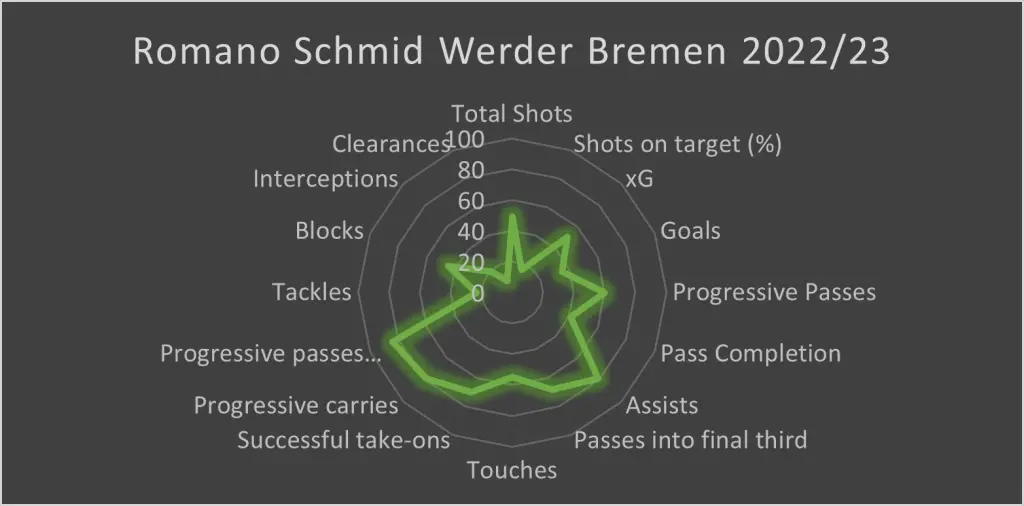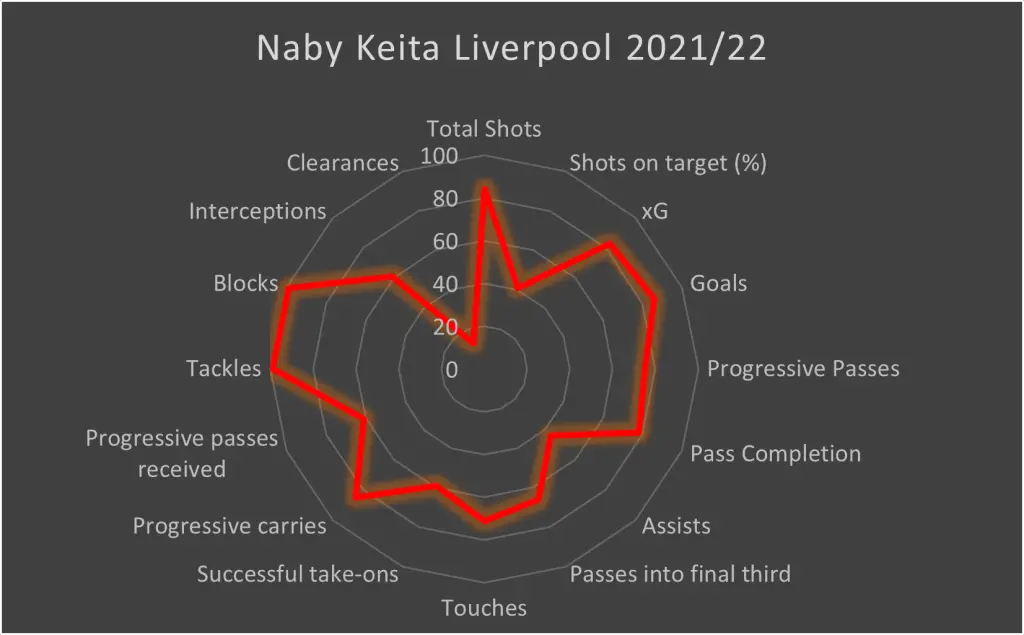Will Naby Keita’s move from the banks of the Mersey to the ones of the Weser River prove fruitful or end in more heartbreak? After five injury ravaged seasons on Merseyside, Werder Bremen have decided to give Keita another chance in the Bundesliga, in the hope he can recapture the form, which earned him the big money move to Liverpool in 2018.
The now 28-year-old has been snapped up by Werder Bremen on a free transfer after his contract ran out at Anfield. The Guinean international signed a three-year deal, which will see him stay at the Weserstadion until 2026.
Long-time viewers of the Bundesliga will remember the midfielder from his time at RB Leipzig where he excelled, even being named in the 2017/18 team of the season for his excellent displays across the campaign. But since he made the £52.75m pound move, which was a record deal for an African player at the time, he struggled to stay fit and string a run of performances together. The Guinean only made 129 appearances over the five years he was at Anfield, leaving many of the Reds’ fans wondering what could have been.
Considering this injury record, it’s a massive risk by Ole Werner’s side to sign the midfielder, but one which could take the Die Werderaner to the next stage of their development.
Why the signing makes sense
The signing of Keita is arguably the Northerners biggest arrival since Davy Klaassen joined in the summer of 2018. That same summer, Keita was made his long-awaited move to England and Liverpool. He had played a starring role in RB Leipzig’s 2017/18 campaign, which saw him end the season on six goals and five assists helping the side to a sixth place finish in only their second season in the top-flight.
And it’s this two year spell at RB Leipzig, which is the reason Werder have brought the midfielder in, as Werner and the club hope to reignite his career and bring him back to his best. Over his two years previously in the Bundesliga the Guinean made 59 appearances, scoring 17 goals and providing nine assists. This shows the 28-year-old will bring much needed attacking influence to Bremen’s midfield who were lacking in this area last season.
Leonardo Bittencourt, Romano Schmid and Jens Stage scored a combined seven goals last season and only provided eight goals between the three of them. This wasn’t a massive problem last season though, as Bremen could heavily rely on strike pair Niklas Füllkrug and Marvin Ducksch to score the goals, with the partnership scoring 54% of Werder’s goals last term. But Saudi Arabian side Al-Wehda have made a bid of €12m for Ducksch and Füllkrug is attracting interest from a host of clubs around Europe, including Bayern Munich. This would mean Werder will have to go into next season needing to replace two players who were their main scoring outlets last time out. One way of doing this is of course to buy replacement strikers, which Bremen have already started to do, with Dawid Kownacki joining from Fortuna Dusseldorf on a free, but Werner knows he needs to find goals from other areas of the pitch if Bremen are to establish themselves in the top-flight after a turbulent few years.
This is where Keita comes in.
As well as having Bundesliga experience, the Guinean will bring genuine goal threat to the side’s midfield. He is known for his ability to strike from range as showcased on the biggest occasions against the likes of Atletico Madrid and Chelsea during his time at Liverpool. One other major problem losing the likes of Füllkrug and Ducksch will bring for Werder is their game plan may have to change. Bremen played direct to the attacking duo, who would hold the ball up and wait for the whole team to move up. Unless they find like-for-like replacements, Werner’s side may have to develop better ways to get up the pitch and Keita may be key to this. The midfielder is great at receiving the ball in tight spaces before turning his man and driving from the defensive third or middle third of the pitch. His quick feet and agility allows the Guinean to turn away from the press and turn defence into attack in a blink of an eye.
In the 2017/18 Bundesliga season Keita made 103 progressive carries and successfully completed 111 successful take-ons, showcasing his dribbling and close ball control skills. This will help relieve pressure on Werder’s defence as he likes to attract players towards him before releasing the ball at the right moment to start another attack.
If his fitness allows, Keita is also a great pressing midfielder, who loved the box-to-box role at RB Leipzig, playing in a dynamic 4-2-2-2 formation at the Red Bull Arena. In the 2017/18 season alone he had 135 shot creating actions as well as 218 progressive passes, showing how well he uses the ball.
Bremen manager Werner highlighted these attributes when discussing the signing of Keita: “Naby is a technically gifted and hard-running midfielder, who will provide us with lots more flexibility.
“He is dangerous in front of goal and can also provide assists too. He will be an important figure in the centre of the pitch for our squad,” added Werner. “He played in a Champions League final last year and has so much experience on the international stage, which our team will only benefit from. I’m really looking forward to working with him.”
When looking at the his statistics in his last season at RB Leipzig compared to Werder Bremen’s midfielders last season, it is clear to see he outperforms them in most attributes and will add a new dimension to their midfield. The statistics have to be taken with a pinch of salt as Keita was playing in a much more dominant RB Leipzig side than Romano Schmid and Jens Stage who helped Werder to a 13th place finish, but it is clear Keita will add something different next season.



One thing which jumps out from the graphs, made using statistics from FBRef, is the lack of dribblers in the Bremen midfield. Keita will add much-needed energy to the Bremen midfield. He also outperforms both Stage and Schmid in interceptions, a part of the game the Guinean excels at. He has great anticipation and awareness of when to press and jump in ahead of a player to steal the ball and launch an attack.
As shown by the graphs, Keita could play one of two roles in Werder’s midfield setup. Stage was more of a box-to-box, number eight style midfielder in Werner’s setup while Schmid had more license to stay up the pitch and play a number ten role. Keita has the ability to be the forward thinking midfielder like Schmid, who plays off the striker pairing, due to his great on the ball ability, but due to his off the ball and press resistance it would make more sense for Keita to play the number eight role. This would help Bremen in their buildup play and allow Keita to use his agility and anticipation to make ball-winning challenges as well as progressive carries.
Julian Brandt had a standout campaign last term, arguably his best in a Borussia Dortmund shirt, but interestingly when comparing his season to Keita’s back in 2017/18, there isn’t much difference between them, with Keita arguably performing statistically better. People may have their problems with Bremen’s move for Keita due to his injury record, but if they can get him back to anywhere near the level he showed at RB Leipzig they will have an outstanding midfield operator on their hands. And with Keita only being 28, he still has many years at his peak left if his body allows.


Where will he fit in at the Weserstadion?
Werner guided Werder to a comfortable 13th place finish in the club’s first season back in the Bundesliga after relegation in 2021. The 35-year-old adopted a 3-5-2 or 3-1-4-2 formation to great effect in his first season full season as a coach in the German top-flight. The system heavily relied on the goals of front pair Füllkrug and Ducksch as well as the wing play of Anthony Jung and Mitchell Weiser. Werner’s system saw the team vacate passing through the thirds and seen a longer approach with balls being played up to the front two. Play focused on getting the ball into crossing areas and to get Ducksch and Weiser on the ball as much as possible as they were Bremen’s key providers, often creating chances for the team. Weiser averaged 0.32 assists per 90 last season, making him one of the Werder’s and the Bundesliga’s key providers. When losing the ball Werder liked to counter-press to regain the ball, with Werner wanting his side to pride themselves on being selfless for the team.
Going into next season, Werder will be looking for another year around the middle of the Bundesliga table, with no fears of relegation. With possibly both their main forwards departing this summer, many people are worried for the northern side. But how will Keita fit into this system and aid them in their second season back in the Bundesliga?
In terms of the 3-5-2 system, Ilia Gruev and Christian Groß are likely to continue at the base of midfield, protecting the back three. As previously mentioned this means Keita could either play the number eight or ten role. The eight role, mainly occupied by Stage last season would be the role many see him taking up. This is dependent on Keita’s fitness and how much he can get up and down after so many injuries, but as shown by the graph Keita was still in the top percentile in the Premier League for defensive and attacking output in the 2021/22 season.

If he can stay fit then Werner may have a box-to-box midfielder who can get hold of matches for his side. This means Bremen could line-up with a midfield trio of Gruev/Groß, Keita and Schmid/Bittencourt.
Another option for Werner is to bring use the system which brought him so much success at previous club Holstein Kiel in the 2. Bundesliga. Under Werner, Kiel only missed out on promotion to the Bundesliga due to a 5-2 aggregate loss to Köln in the relegation play-off in 2021. In his two-and-a-half seasons at Kiel, Werner deployed a 4-3-3 system with his two number eights in Alexander Mühling and Lee Jae-Sung proving vital to his system. Between them they scored 17 goals in the 2020/21 season showing how much freedom and license they were given under Werner to affect the opposition’s box.
Obviously the Bundesliga and the second tier are two different beasts, meaning this same attacking style can’t be completely replicated by Werner, but Keita could go a long way in helping the young coach deploy this system. With the possibility of Bremen losing their strike pair being quite high this summer, this might be the perfect opportunity for Werner to change the setup of the team to suit the options they have. Finding two strikers who can replicate the performance as well as style of play of Ducksch and Füllkrug will be hard for Werder to do meaning a change of formation and style may benefit the team this season.
It will definitely benefit Werner as he will have different systems he can change between, which is vital in the second season as other teams may start to find them out. This may have already been happening near the end of last season, as Werder only won once in their last six Bundesliga matches. If Werner does make this change then Keita could possibly play one of the eight roles with Stage deployed alongside him. The Dane would compliment Keita well in the midfield as he enjoys doing more of the dirty work, while Keita could drive and move the ball forward. On major problem with the change of system is the lack of natural wide forwards Bremen currently have in their ranks. Schmid and Bittencourt have played out wide before, but they would look to come inside, meaning the central area may become crowded and congested. Clemens Fritz, who is Werder’s head of scouting and professional football, may be busy once again trying to find Bremen’s next eye-catching signing to fill these wide roles.


Will injuries cost him and Bremen?
During the course of his career in the Premier League, Keita picked up a staggering 18 injuries. Over his five year stay at Liverpool this averages out at an injury every 100 days and some of the causes for injury are mind-blowing. From injuring himself in the pre-match walk, being subbed because he hurt his toe by kicking the floor to being unavailable due to the air-conditioning on the plane causing Keita to have a stiff neck.
Keita only made five starts last season after suffering a season-ending injury while on international duty with Guinea in March. This final injury still remains a mystery with Liverpool never revealing what the injury was. Playing just over 400 minutes last season will leave many Werder fans concerned that the midfielder may not come to the Weserstadion and kick on like he did back in his RB Leipzig days.
But if Bremen can get Keita’s fitness back to what it was like during his previous stint in Germany, where he only missed four games through injury, then they will have a genuine key player on their hands. Fritz, Werder Bremen head of scouting shared his enthusiasm for the deal.
“A number of clubs are obviously going to be interested when a player like Naby Keïta is available on a free transfer,” said Fritz. “We’re therefore really pleased that Naby has decided to join Werder, despite several other offers. His qualities will massively strengthen our team.
“We obviously know Naby from his time previously in the Bundesliga and have kept an eye on his career in the Premier League. He suffered an injury setback at the start of this season and that meant he didn’t play as often as he’d have liked to. We now want to get him back to his best.”
Ultimately, with no cost to the deal and with Keita reportedly taking a 75% pay cut to make the deal happen it looks like a smart bit of business by Bremen to help them take the next step up the Bundesliga table next season.
GGFN | Stuart McCracken









